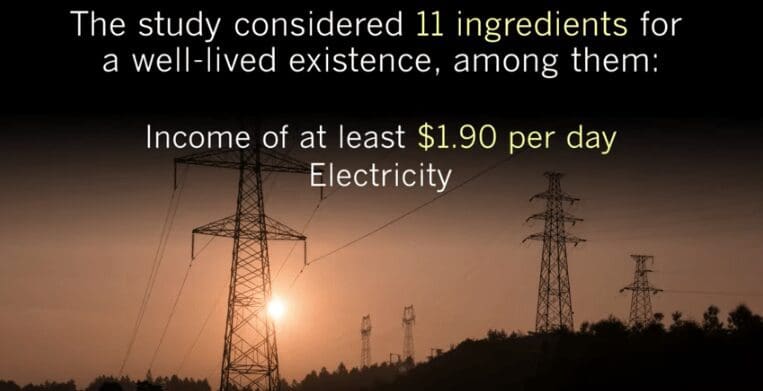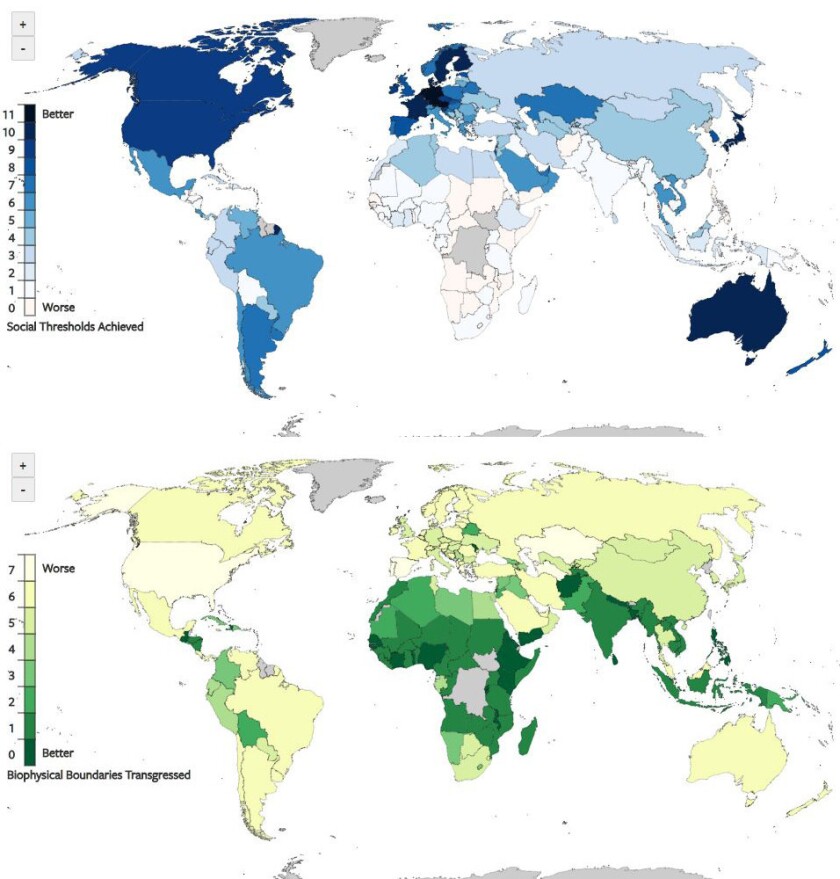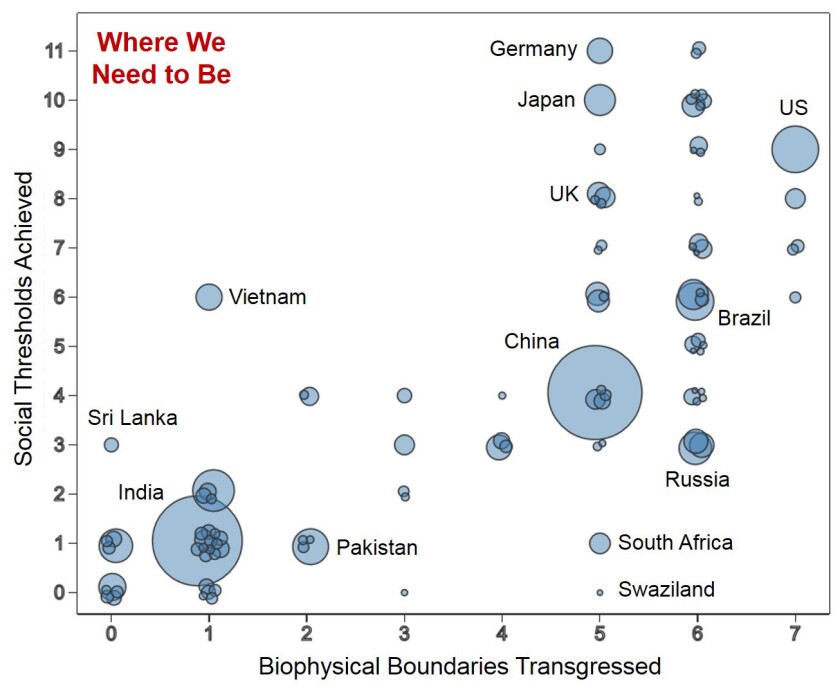Bad news, Earthlings: It may be possible for everyone on the planet to live a “good” life. It may also be possible for humans to live within their environmental means.
But if present trends continue, there will be no way for both of these things to happen at the same time.
That’s the bleak — if not entirely surprising — assessment of researchers from the Sustainability Research Institute at University of Leeds in England and the Mercator Research Institute on Global Commons and Climate Change in Berlin.
They came to this conclusion after considering 11 necessary ingredients of a well-lived existence. Some of the items on their list are basic human needs — income of at least $1.90 per day, electricity, enough food to eat and a life expectancy of at least 65 years. Others were social goals, such as equality, dependable friends and family, and a decent degree of life satisfaction (at least 6.5 on a scale of 1 to 10).
The researchers also considered the cost to the planet of achieving these things. They broke it down into seven categories such as carbon dioxide emissions and use of natural resources like nitrogen, phosphorus and clean water.
What they found is that humanity has a lot of work to do.
Right now, there’s not a single country on Earth that provides its people a good, sustainable life.
Not one.
In fact, there aren’t even any that come close.
The researchers, led by economist Daniel O’Neill of the University of Leeds, believe this is possible to do. But it will take some hard work.
Let’s start with the good life.
Out of roughly 150 countries studied, only three — Austria, Germany and the Netherlands — currently provide their citizens with all 11 items on the list. An additional seven — Australia, Belgium, Denmark, Finland, France, Japan and Sweden — offer 10 out of 11. The United States achieves nine, as does Canada.
But none of them is close to doing so sustainably. Indeed, none of them meets more than two of the seven requirements set out for environmental sustainability.
The United States doesn’t meet any of them — and misses some “by a wide margin,” O’Neill said. America’s per-capita CO2 emissions are 13 times higher than the sustainable level, its phosphorus use is eight times higher and its nitrogen use is seven times higher. As if that’s not bad enough, its ecological and material footprints are both four times above sustainable levels.
At the other end of the spectrum are 35 countries where life is pretty miserable. Of the 11 necessities for a good life, these countries provided either none or just one.
In general, the more social benefits available in a country, the more likely that country is living beyond its environmental means. The reverse is true as well — countries that operate sustainably tend to offer fewer social benefits.
Perhaps the country that strikes the best balance is Vietnam, the researchers said. Though it meets only six of 11 social goals, it meets every sustainability goal but one. Vietnam’s sole environmental transgression is that it emits too much carbon dioxide to keep the planet from warming by more than 2 degrees Celsius, the goal set forth in the Paris Agreement.
By the same measures, the country with the worst balance is Swaziland. This nation is as environmentally unsustainable as China, South Korea and the United Kingdom, missing five out of seven goals. And yet, despite using so many natural resources, it fails to give its citizens even one of the 11 necessary components of a good life, the researchers found.
All around the world, countries are doing a pretty poor job of living sustainably. Two-thirds of them emit too much CO2, and more than half use too much nitrogen and phosphorus. In addition, 56% of countries are using their land in an unsustainable way.
Only 16 countries in the analysis met all seven environmental goals.
Although the overall picture may look grim, the researchers saw some hopeful signs. For example, there were a few countries that managed to score well for education and life satisfaction while keeping their CO2 emissions way below the global median level (that is, the point at which half the countries were emitting more and half were emitting less).
This discovery “demonstrates that much more carbon-efficient provisioning systems are possible,” O’Neill and his colleagues wrote.
Likewise, the data suggest that the nutrition, income, sanitation and electricity needs of each and every person on Earth could be met “without significantly exceeding planetary boundaries” for sustainability, they wrote.
If someone could wave a magic wand and reallocate Earth’s resources so that they were shared equally by everyone, it would probably be enough to meet everyone’s basic human needs (the list that includes enough food to eat and enough money to avoid extreme poverty, among other things), O’Neill said.
But it still wouldn’t allow everyone to enjoy “more aspirational goals like secondary education and high life satisfaction,” he added. For that, “we need to become two to six times more efficient at transforming resource use into human well-being.”
That’s much easier said than done, of course. And it gets only more difficult when you consider that there will be 11.2 billion people on the planet by the end of the century, according to projections from the United Nations.
In theory, wealthy nations could cut way back on their resource use while maintaining their achievements on the social front. Some straightforward first steps include “switching from fossil fuels to renewable energy, producing products with longer lifetimes, reducing unnecessary waste, shifting from animal to crop products, and investing in new technologies,” the researchers wrote.
And in a future world “with very different social arrangements or technologies,” there could be a different equation for converting natural resources into human well-being that allows everyone to enjoy all aspects of the good life, O’Neill said.
“Is this realistic?” he said. “I hope so, because the alternative could be environmental catastrophe.”
The study was published Monday in the journal Nature Sustainability. You can explore the results and see the trade-offs for yourself on this interactive website.






















